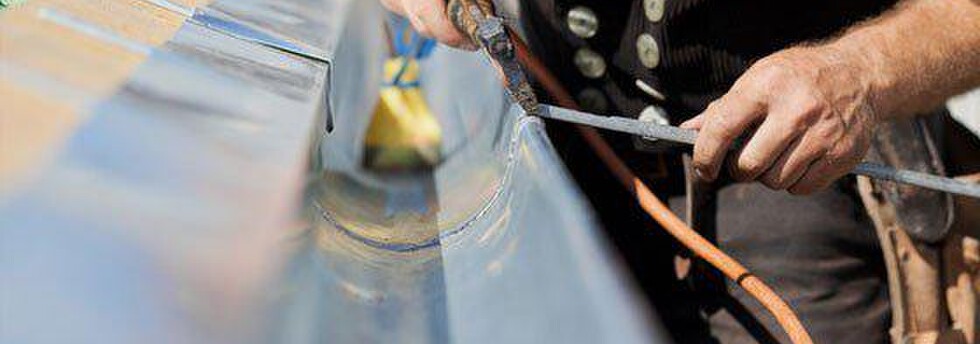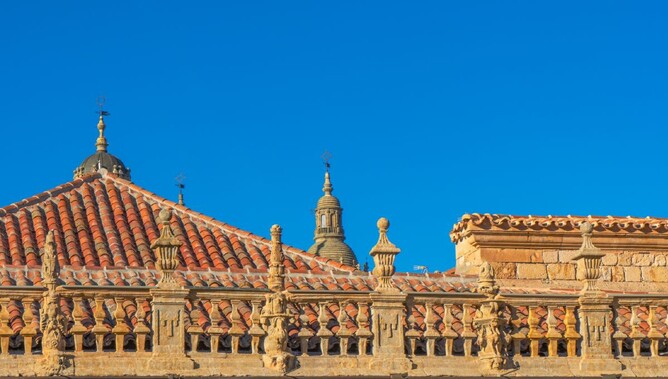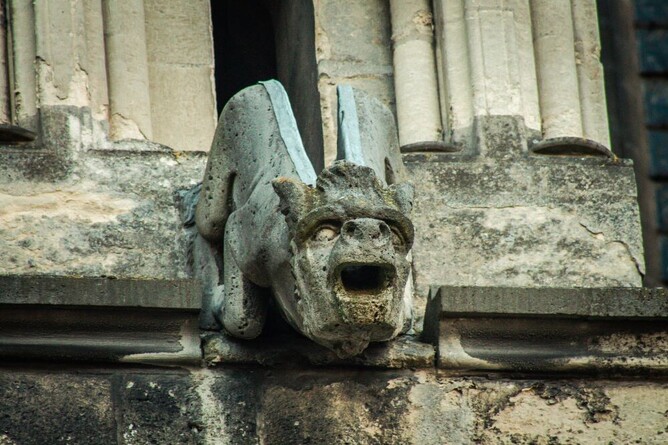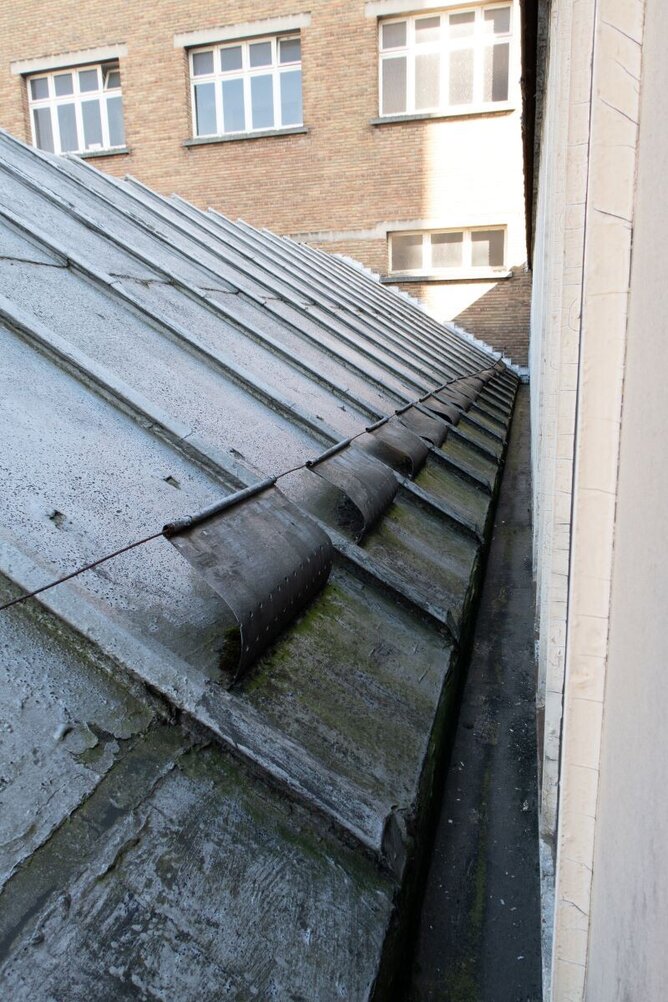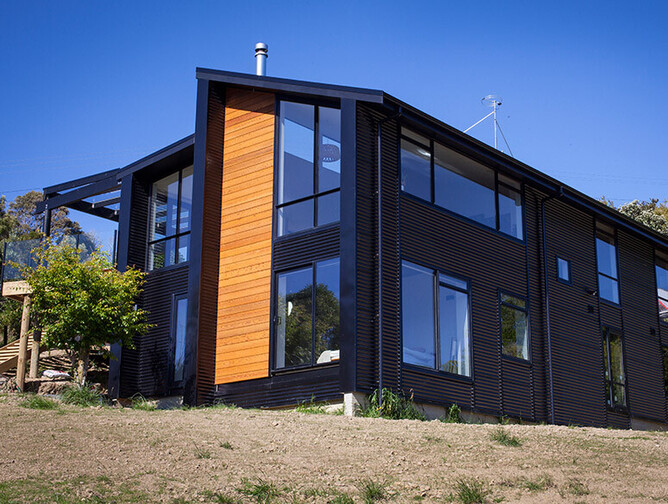Gutters, often overlooked components of a building's structure, have a rich history that spans centuries. From ancient civilisations to modern architecture, the design and function of gutters have evolved significantly. This article will look into the historical evolution of gutters in conjunction with Fine Line Fascia & Spouting, specialists in continuous spouting in Hamilton.
We'll explore how these unassuming features have adapted to the needs and aesthetics of different architectural eras, leading to modern days where innovative materials and streamlined systems, such as continuous spouting, have become the epitome of beauty and practicality.
Contemporary Guttering Today
Continuous spouting, a Fine Line Fascia & Spouting specialty, offers a contemporary solution to gutter design, featuring fewer seams and joins. This modern approach enhances the visual appeal of homes and buildings and ensures practical functionality. The wide range of colours and styles available allows homeowners and architects to choose continuous spouting that seamlessly complements the aesthetic appeal of any structure.
Fine Line Fascia & Spouting takes pride in providing quality products that stand the test of time when it comes to gutter replacement in Hamilton. Continuous spouting offers longevity, visual appeal, and cost-effectiveness, embodying the commitment to excellence that has characterised gutter evolution.
Join us on a journey through time as we unravel the fascinating narrative of gutters, from ancient civilisations to the cutting-edge solutions offered by Fine Line Fascia & Spouting in the modern era.
Ancient Beginnings: Guttering
Let's go back to ancient times when people first realised how crucial it was to handle rainwater wisely. In ancient Rome, they devised something truly impressive called the Cloaca Maxima. This wasn't just any sewer system; it was a groundbreaking solution to deal with rainwater and wastewater. Picture it as an early version of today's modern gutters, designed to keep rainwater and sewage away from where people lived.
Built around 600 BCE, the Cloaca Maxima was a genius network of channels, tunnels, and pipes. It was a practical and smart way to manage water, showing that the Romans knew their stuff when handling rain and sewage. What's incredible about the Cloaca Maxima is that it wasn't just about function; it also had a touch of architectural flair. With its carefully built arches and vaults, it wasn't just a sewer system but a piece of art in the city.
So, when we talk about the historical evolution of gutters, the Cloaca Maxima is like the grandparent of gutter systems. It tells us that even way back then, people were thinking about how to make cities work better, and in doing so, they laid the groundwork for the clever gutter systems we have today.
Medieval Innovations: Guttering
Now, let's fast forward to medieval times, where the way people handled rainwater got a creative makeover. As architecture evolved, so did the strategies for managing rain during the medieval period. Think about those medieval castles and buildings – they weren't just sturdy structures but also pretty clever in dealing with rain. This was when they introduced something called gargoyles.
And gargoyles were more than just spooky statues. They were unique architectural additions that had exceptional talent. Perched on the edges of buildings, these fierce-looking stone or wooden creatures served a dual purpose. Besides scaring off evil spirits (at least, that's what people believed), gargoyles were designed to help channel rainwater away from the building.
During the medieval era, managing rainwater wasn't just about practicality; it became an art form. Gargoyles added a touch of drama and personality to buildings while cleverly diverting rainwater. Therefore, medieval architects must have decided that if they were going to deal with rain, they might as well do it in style!
This innovation in rainwater management paved the way for a more aesthetic approach to gutters. This shows us that even back then, people were finding creative ways to make the mundane task of handling rainwater a bit more exciting and visually appealing.
Renaissance Elegance
In the Renaissance period, where everything got a touch of elegance and flair, people didn't just see gutters as a practical necessity; they also turned them into works of art.
As the Renaissance unfolded, architectural designs became more intricate and pleasing to the eye. This shift extended to gutters, which transformed into more than just water-draining devices. They became part of the visual story of a building. Imagine decorative metal gutters, not just plain and functional but adorned with intricate patterns and designs. These weren't your average gutters; they were like jewellery for buildings.
The Renaissance gutters were all about aesthetics. Instead of hiding them away, people proudly showcased these beautiful gutter designs on grand structures. Palaces and estates weren't just functional; they became showcases of artistic expression. Therefore, this era marked a departure from the idea that gutters were purely utilitarian – now, they were statement pieces that added to the overall beauty of a building.
So, when we talk about Renaissance elegance in gutters, think of them as more than rainwater channels. They became symbols of the artistic spirit of the time, proving that even something as practical as a gutter can be a canvas for creativity and elegance.
Colonial America and Early Modern Period: Guttering
In Colonial America, where European settlers shaped the architectural scene with their unique influences, they also included some pretty innovative gutter designs. As these settlers established colonies in North America, they didn't just bring their traditions; they brought practical solutions for managing rainwater.
In Colonial America, wooden gutters took the spotlight, reflecting a straightforward and no-nonsense approach to handling rain. Forget the ornate designs of the Renaissance. These gutters were all about simplicity and functionality. Picture simple troughs attached to the edges of roofs, quietly directing rainwater away from the building's foundation.
These wooden gutters weren't trying to be fancy; they were built for a purpose. In a time when practicality mattered most, the emphasis was on keeping things simple and efficient. So, colonial gutters may not have been adorned with intricate designs. Still, they played a crucial role in managing rainwater and protecting the foundations of homes.
The wooden gutters of Colonial America represent a practical chapter in the evolution of gutter systems. They show us that functionality and resilience took precedence during this period, laying the groundwork for the diverse gutter systems we have today.
Industrial Revolution and Technological Advancements: Guttering
Fast forward to the 19th century, the Industrial Revolution era, when the manufacturing and materials landscape underwent groundbreaking changes, and gutter design wasn't left behind. This period marked a significant leap forward in innovation, especially with the mass production of cast iron.
The availability of cast iron on a large scale paved the way for creating gutter systems that were robust and durable and embraced a new level of elegance. Imagine ornate cast iron gutters adorning the buildings of the Victorian era. These weren't just functional; they were a statement of sophistication.
The Victorian-era gutters were a fusion of functionality and decorative elements; with their strength and versatility, cast iron allowed for crafting elaborate designs that added a touch of grandeur to buildings. Picture intricate patterns and details, turning gutters into more than just rainwater channels—they became architectural features in their own right.
In this era, gutters weren't merely practical necessities; they became symbols of craftsmanship and design flair. The Industrial Revolution's impact on materials and manufacturing transformed gutter systems into works of art, showcasing how technological advancements could elevate the aesthetic appeal of buildings.
20th Century Modernisation: Guttering
As we enter the 20th century, a time marked by radical shifts in architectural styles, the influence of the Modernist movement became a game-changer for gutter systems. The streamlined and minimalist designs synonymous with this era significantly shaped how we view and design gutters.
During the 20th century, materials like aluminium and steel took centre stage in gutters. Their lightweight nature and corrosion resistance made them perfect choices for the sleek and efficient aesthetics that defined modern architecture. Picture gutters that seamlessly blended with the clean lines and uncluttered designs characteristic of the Modernist movement.
In this period, the focus shifted from elaborate embellishments to efficient and unobtrusive gutter designs. Modern architecture demanded gutters that not only served their practical purpose but also complemented the overall visual harmony of buildings. Aluminum and steel, with their contemporary appeal, became the go-to materials for gutters that embraced the spirit of the 20th-century design revolution.
The gutters of the 20th century became more than functional elements; they were an integral part of the modern architectural narrative. This era showcases how design preferences and material advancements worked hand in hand, resulting in gutter systems that did their job efficiently and seamlessly blended with the evolving aesthetics of the times.
Contemporary Trends: Guttering
In the present day, gutter systems are at the forefront of technological advancements and sustainable practices, paving the way for a new era in rainwater management. As we navigate the modern landscape, continuous spouting takes gutter systems to a new level with fewer seams and joins, making the spouting more durable and long-lasting.
At Fine Line Fascia & Spouting in Hamilton, we are a leading authority in modern continuous spouting. Our expertise aligns seamlessly with the current trends prioritising environmental consciousness and cutting-edge technology. As we look into the latest developments, it's evident that the present-day gutter landscape is evolving in exciting ways.
Eco-friendly materials have taken centre stage in contemporary gutter construction. The use of coated aluminium and stainless steel not only contributes to sustainability but also ensures the longevity and durability of gutter systems. These materials, used by our experts at Fine Line Fascia & Spouting, reflect a commitment to responsible practices in rainwater management.
At Fine Line Fascia & Spouting, our dedication to quality products that last longer, look good and are cost-effective resonates with the contemporary approach to gutter systems.
Conclusion
Our journey through the historical evolution of gutters has showcased the remarkable transformations from ancient civilisations to the present day, where cutting-edge technology and sustainable practices redefine rainwater management.
At Fine Line Fascia & Spouting, our dedication to spouting services and quality products that are functional and aesthetically pleasing sets a new standard for the modern gutter landscape.
From the historical significance of the Cloaca Maxima to the ornate designs of the Renaissance and the technological advancements of the 20th century, the journey has come full circle to a future where our continuous spouting stands as a beacon of innovation and expertise.
The narrative of gutters unfolds not only as a tale of functionality but as a testament to the ongoing commitment to excellence and sustainability in rainwater solutions, exemplified by our expertise of Fine Line Fascia & Spouting.
Interested in a modern solution for gutter replacement in Hamilton?
Talk to the team at Fine Line Fascia & Spouting.
Quotes/Enquires
Janine 021 124 4972
Operations Manager/Director
Justin 021 385 569
